Any mother wants her baby to always feel well and actively develop, so she tries to create favorable conditions for him. Such an indicator as the temperature in the room for a newborn, largely determines its comfort. Often the indoor microclimate affects the health, well-being of the baby and even his mood.
What temperature is optimal for the baby?
Pediatricians recommend maintaining the temperature level in the room of the newborn in the range of 18-22 degrees, in which case the child will feel good. In the heating season, it is difficult to maintain certain conditions in the apartment. But still, it is worthwhile to ensure that the air does not heat above 23 degrees.
No less important is the temperature regime during sleep. In a hot or, conversely, cool room, the child’s sleep will be restless, the baby will be capricious and constantly wake up. During this period, as during wakefulness, the temperature should vary from 18 to 22 degrees. Do not forget to consider personal characteristics: some babies fall asleep perfectly at 18 degrees, while others in the same conditions begin to freeze. To understand what is specifically suitable for your child, pay attention to what temperature in the room the newborn falls asleep faster and sleeps better.
Does a newborn wake up and be naughty when you put him to bed after motion sickness? This may be due to the fact that the bed is too cold. To change the situation, you do not need to wrap the baby or warm the apartment. Just pre-warm the bed with a heating pad (you can put a bottle of warm water in it) or lay a warm diaper.
The temperature regime in the room during the bathing process is another important issue. Many mothers are sure that when bathing a baby, the room should be warmer, so they try to artificially raise the temperature. This is not worth doing. If you constantly wash your child in a warmer room, then under normal conditions, he will freeze after water procedures. If you are very worried that the baby will freeze, just throw a towel on him after bathing.
These indicators are relevant for healthy children born on time. If the baby was born prematurely, it is recommended to maintain a higher temperature in the room - about 24-26 degrees. But do not forget that each case is unique. Therefore, it is better to consult with a specialist.

Danger of overheating and overcooling
Some mothers are very afraid to catch a baby, so they try to maintain the temperature of the room for the newborn above the permissible level. But this can cause overheating of the baby. The fact is that in the child's body, metabolic processes proceed more actively than in an adult. This leads to the accumulation of heat, which is eliminated by the skin and respiratory system. If the room is very hot, the heat exchange process through breathing is difficult, therefore, the child begins to sweat. Overheating can lead to the development of sweating, urticaria, dermatitis and metabolic disorders.
To understand that the baby is hot is quite simple:
- the skin takes on a bright red tint;
- he begins to sweat intensely;
- in places of accumulation of sweat (for example, in the groin) diaper rash is formed;
- he has difficulty breathing, his pulse speeds up;
- due to lack of air, the baby swells, his stomach may hurt;
- the baby has too much saliva, and dry crusts form in the nose.
Subcooling is no less harmful to health. Low temperatures in the room can cause colds, and they often lead to various complications. If you notice that the baby’s limbs are cold and bluish, it is covered with “goosebumps”, then the temperature around is too low.

As mentioned above, the body of each child is individual, therefore, under the same conditions, different children feel differently. To constantly maintain optimal conditions, you need to understand what temperature is acceptable specifically for your child. To do this is quite simple, you just need to observe the condition and behavior of the baby.
The child is suitable for the selected temperature if:
- he feels well, his sleep is calm and sound;
- the child does not sweat or blush;
- it is not covered with goosebumps, arms and legs have a normal temperature;
- the breathing of the newborn is calm, not difficult;
- heart rate is normal.
To make it easier to monitor the temperature of the room for the newborn and maintain it at an optimal level, install a thermometer next to the bed.
If the temperature does not correspond to the optimum, it is necessary to take measures to normalize this indicator. To warm a cold room, you will need a regular household heater. If the room, on the contrary, is too hot, you can achieve the desired temperature using regular ventilation or air conditioning. During ventilation, the child must not be indoors. If the air conditioner is installed in the child’s room, the crib should be located so that the baby does not fall under the flow of cold air. You can also cover the hot batteries with a blanket or a thick cloth.

What if there is no way to change the temperature?
Unfortunately, far from always parents can control the temperature in the apartment. In this case, you have to adapt to it so that the baby does not catch a cold or does not overheat.
- When dressing the baby, consider the temperature in the room. If the room is hot, underwear will be enough. If, on the contrary, it is cool, the clothes should be warmer (warm socks, sliders, vest).
- If the room is hot and stuffy, give your child more fluid.
- In the heat, you can increase the number of baths up to several times a day.
All kinds of canopies on the crib - this is undoubtedly beautiful. But they accumulate dust and obstruct ventilation. Therefore, it is better to refuse them.
Air humidity
Equally important is such an indicator as air humidity. Often during the heating season the air becomes dry, which negatively affects the well-being of the baby. Determine the humidity in the children's room using a household hygrometer. It should vary between 50-70%. Due to excessive heating, the humidity in many apartments drops 2 times lower than normal.
If this indicator is lower than acceptable, it is recommended to purchase a humidifier. If this is not possible, you can use other, more affordable ways. For example, humidity will increase if you place containers with water around the room or hang wet towels, do wet cleaning more often, and use a spray bottle from time to time. Installing an aquarium or decorative fountains is another way with which you can increase humidity and decorate the interior.
So, humidity and temperature in the nursery affect the mood and well-being of the baby. That is why it is so important to maintain these indicators in the norm. And do not forget that optimum temperature The room should be constant. No need to intentionally raise it before bedtime or bathing.
Frequent guests in childhood are colds. Immune immunity, imperfect protection systems, multiple contacts with carriers of viruses or patients in large children's groups are factors that explain the high susceptibility of children to diseases. In search of the ideal prevention option, parents try all kinds of methods, from simple fortified supplements to extreme hardening such as winter walrus, for example. But few people think that the first steps to solving the problem are extremely simple, cost nothing, and they begin with the right microclimate in the room where the baby is daily. The optimal temperature for the child in the room, and sufficient humidity play an important role in reducing the incidence of disease.
OPTIMUM ROOM TEMPERATURE
Young parents, under the "sensitive" guidance of not so young grandmothers, are zealously trying to protect their baby from the common cold from the first days of his life. The temperature in the house is 25 degrees, tightly closed windows and doors, a child dressed as a "cabbage" and covered with several blankets. Well, that’s it! Now no virus can get here! Only the effect is, alas, the opposite. And one of the main reasons is that the optimal temperature for the child in the room is chosen incorrectly.
The thermoregulation system of the newborn has not yet fully matured. It can very easily both be supercooled and overheat. But overheating is much more dangerous for him. In infants, all metabolic processes are much faster and more intense, in comparison with adults, so their body generates a lot of heat. It is necessary to get rid of it, and the child has two ways for this.
- Heat transfer during breathing: inhales air, for example, 20 degrees, exhales, warmed to body temperature - 36.6. Part of the heat is thus lost.
- Through the skin when sweating.
The first option for the baby (and for adults as well) is the main one, since it is the most physiological and harmless. Heat exchange during breathing is freely performed at an air temperature of no higher than 22 degrees. Therefore, most pediatricians are inclined to think that the optimal temperature for a child in the room should be within 18-22 degrees. These figures are achieved by regulating the heating (if possible), and by ventilating the room. In the cold season, air 4-5 times a day for 15 minutes. In addition to lowering the temperature, oxygen saturation of the air is also increased in this way, which is very important, because the child’s need for it is two and a half times higher than that of an adult. And viruses with bacteria "are not friends" with fresh air. Do not panic about the movement of cool air flow (draft). Unless the child is warmed up, sweating or just from a warm bath.
If too caring mothers considered the best air temperature in the children's room above 22 degrees, then they achieved the following results:
- major heat loss occurs through the skin;
- with then the liquid is lost (the child is dehydrated) and salt (loses the necessary trace elements);
- the delicate and sensitive skin of babies is not ready for such a test, which is manifested by sweating and diaper rash;
- dehydration is accompanied by an accumulation of gases in the intestines, bloating and colic;
- drying of the mucous membranes of the upper respiratory tract violates their protective function, which prevents the penetration and spread of pathogenic microorganisms;
- the mucus in the nose dries, forming crusts that interfere with breathing, cause snoring in the child and disturb sleep;
- insufficient saliva (due to the same dehydration) is accompanied by the occurrence of thrush.
As you can see, the effects of overheating for young children are very serious. But hypothermia should also not be allowed. A newborn cannot yet produce heat through muscular trembling, so the optimal temperature for the baby in the room should not drop below 18 degrees. A prolonged stay at low temperatures is fraught with inflammatory diseases of the respiratory and urinary systems.
OPTIMUM TEMPERATURE IN THE ROOM FOR CHILDREN OF AN OLDER AGE.
Despite the fact that the mechanisms of thermoregulation in children after a year are more perfect, the above recommendations on temperature condition for them remain relevant. Unless the upper limit can be safely lowered to 20 degrees. But if a child grew up, say, up to 5 years in greenhouse conditions (air temperature not lower than 25 degrees, I’m not familiar with drafts), then the microclimate in the room should change gradually. Otherwise, non-adapted systems will not cope with the task assigned to them, and the transition to the correct parameters will end in a cold illness.
Of course, the optimum temperature for the child in the room will not completely protect him from seasonal viral diseases, but will help reduce their frequency, ease the course and speed up recovery.
In a normal living room, the air temperature should not fall below +18 degrees
The most important factor in comfortable living conditions is the air temperature in the living room, which should be approximately equal at any time of the year. In winter, in central heating houses, temperature control is carried out by utility providers, and in summer, tenants get out on their own.
Regulatory room temperature requirements
The requirements for air temperature in the cold season in residential premises are set out in GOST R 51617-2000 - it was approved on 06/19/2000. According to the specified GOST, the permissible temperature range for residential premises for various purposes is 18-25 degrees.
According to the standards, even in the summertime, the air temperature under the ceiling of the room should not exceed 25 degrees, although the sun is unlikely to know about these standards and bakes for pleasure. When autumn comes, and the air temperature begins to drop, then to maintain its necessary indicators, central heating is turned on in the housing.
The same rules determine the moment of connecting central heating - when for three consecutive days the temperature in the street is below +8 degrees. The local authorities inform about the beginning of the heating season.
Turning the heating system on and off
During the heating season, the coolant temperature fluctuates. Obviously, there is no point in drowning “to the fullest” when the days are relatively warm. Therefore, when it gets warmer on the street, the batteries in the house cool down and vice versa - so that the temperature inside remains constant.
If on the street the temperature fluctuates around +2 degrees, then to maintain normal temperature in the house it is enough to heat the batteries up to 40 degrees, but in the most severe frosts they can heat up much more (sometimes up to 90 degrees).
Sanitary norms and rules require compliance with the following temperature indicators:
- temperature in an ordinary living room +18 degrees;
- air temperature in a corner room +20 degrees;
- the temperature in the bathroom can increase to +25 degrees.
When the outside temperature stably exceeds +10 degrees, the end of the heating season comes. True, the housing code allows a decision to turn off or on the heating by the residents themselves, but this applies only to those homeowners who themselves manage their housing stock (HOA). Feeling the heat in the apartments, they can, after notifying the heat supply organization, turn off the central heating.
Video about living room air temperature
What to do in case of heating problems?
If the air temperature sensor in the room confidently and stably shows an insufficient degree of heating, then there is no point in freezing further, and on the same day you need to send a written complaint to the housing and communal services. After this, the commission must be welcomed to the complainant’s apartment within two days and observe a violation of the thermal regime.
- If the temperature in the rooms does not reach +14 degrees, then the consumer may not pay at all for heating services.
- If the temperature is slightly higher, but lower than normal, then utilities are required to recalculate the payments made.
By the way, the managing utility company is obliged to maintain the standard temperature and humidity not only in the apartments themselves, but also:
- in attics (in warm attics not lower than +12 degrees, and in cold attics, the temperature should be 4 degrees higher than the air temperature in the street);
- in technical undergrounds and basements (basements should be clean, dry, equipped with ventilation and lighting, the air in them should not be colder than +5 degrees, and its relative humidity should not exceed 60%);
- in the hallways and stairwells, the air should not be colder than +16 degrees.
Air temperature in the room of the newborn
Since the baby spends most of the time indoors, the air temperature in the room of the newborn should be perfectly maintained at the proper level. This indicator should be monitored as clearly as the temperature of the water for bathing a newborn baby.
Most pediatricians agree that the optimum temperature for infants is +22 degrees. There are even a number of pediatricians, whom it seems to be tropical conditions that will prevent the baby from being properly tempered, such experts suggest lowering the temperature in the children's room to 19-20 degrees.
Do not rely on your own feelings of discomfort from such a temperature - an incorrect lifestyle changes the natural mechanisms of thermoregulation in adults. It’s easier for an infant to adapt to the conditions created for him. Most mothers are more afraid of overcooling a baby than overheating it, which is why they show excessive activity in this direction, although such actions can lead to heat stroke in children. Therefore, in prosperous families with an abundance of grandparents, greenhouse living conditions are created for the baby, and the child is often sick at the same time. In dysfunctional families, where the temperature in the baby’s room does not bother anyone, the child becomes hardened faster and is less sick from colds.
What if the temperature in the baby’s room is impossible to control?
The desired air temperature in the room for the baby is not always achievable. Below 18 degrees, the temperature rarely drops, but it often rises above the upper limit: in mild winters with good heating or in summer heat. To protect the baby from overheating, you can resort to the following:
- use a minimum of clothing;
- to frequent water procedures;
- give more water.
The quality of sleep of a newborn depends on air temperature. Active metabolism does not allow it to freeze. We need to believe that a baby sleeping in a vest and sliders in a room at an air temperature of 18-20 degrees will feel much more comfortable than if you wrap it in a blanket at above +20 degrees. When bathing a baby, the air temperature should remain at the usual level, so the room before the bathing procedure does not need to be specially heated. Then the child after bathing will not get sick from the temperature difference.
What temperature in the room is comfortable for you? Tell us about it in
Environmental conditions play an important role in the development of the baby, who is forced to spend most of the first months of life indoors. Therefore, the temperature in the room for the newborn should be optimal and comfortable. Constant hypothermia or overheating of the child, as well as sudden changes in temperature can lead to the development of a number of conditions that are fraught with unpleasant consequences and chronic diseases.
Even if the temperature in the room seems optimal to you, carefully monitor the well-being of the child: if he feels comfortable, there is nothing to worry about
The conditions in the room where the child lives are determined by his condition, vital signs and reaction to the environment. The weaker the baby, the more comfortable the indicators should be. For example, the temperature in the room of a newborn who was born on time and without any deviations is 19 ° -21 ° C. If the baby is premature, then it will develop better at an air temperature of at least 24 ° -25 ° C. If the baby is strong and peppy, you can introduce natural hardening, starting from birth. In this case, the thermometer should not exceed 18 ° -19 ° C.
The main mistake of parents is an attempt to adjust the newborn to conditions that seem comfortable for the adult body. In fact, with age, the processes of human thermoregulation are disturbed due to an improper lifestyle. And the kids are able to adapt to environmental conditions without any problems. From here an interesting paradox arises. In prosperous families, where parents and numerous relatives take care of the child, greenhouse conditions are created so much that the child’s skin cannot breathe. Therefore, such children often get sick. And in dysfunctional families, where the baby is left to his own devices and no one controls the temperature, the level of colds among newborns is much less.
It is important to remember that it is necessary to prepare the conditions in the room before the baby appears. Temperature and humidity should be adjusted in advance. In addition, indicators should not change dramatically. The thermometer should be located near the crib of the newborn, in one plane - this will help to always get the right numbers.

Try not to wrap the baby unnecessarily, because overheating has no less harmful effect than hypothermia
The accelerated metabolism and the incompletely formed system of thermoregulation lead to the fact that infants are very intensively released heat. This occurs with the help of the lungs and the entire surface of the skin. If there is a significant increase in air temperature in the newborn’s room, the baby has to inhale warm air, he cannot get rid of the internal heat and begins to sweat. And then mineral salts and water come out, so necessary for the growing body.
If the air temperature in the room is above normal, it is easy to determine by the condition of the child:
- in the natural folds and places of joint bends, redness appears, turning into diaper rash;
- the baby often opens his mouth as if he lacks air. Gradually, breathing from the nasal becomes oral;
- body temperature may increase slightly;
- as a result of intense loss of water and digestive disorders, newborns may experience abdominal pain, bloating;
- crusts appear in the nose, which also interfere with normal breathing.
As a result of hypothermia, a catarrhal disease can develop, which will significantly weaken the children's body.

If it’s too hot in the room, bathe your baby more often: this will help you better tolerate the high temperature of the air
Most often, the temperature in the living room does not fall below 20 ° -22 ° C. This may be due to hot weather or the heating season, when it is impossible to adjust the indicators yourself.
If it is impossible to artificially create the optimal temperature in the room of the newborn, it is necessary:
- ensure the intake of a sufficient amount of fluid in the child's body;
- minimize the amount of clothing;
- organize water treatments. The temperature of the water during bathing should be as close as possible to the indicators in the room, then the baby will not notice the difference and will not get cold.

If the humidity in the baby’s room is very low, put in an aquarium or just any water tanks
In addition to the temperature in the room of the newborn, it is also necessary to monitor the humidity. Humidity is rarely found indoors, but excessive air dryness is very common. If you do not follow this indicator, drying out of the mucous membranes of the newborn, sleep disturbance, accelerated loss of fluid, changes in the behavior of the child may develop. To prevent this, you can install an aquarium or ordinary water tanks in the room. Relative humidity environment should not fall below 50%.
Humidity and temperature control in the room of the newborn should be carried out daily. Do not neglect regular ventilation and wet cleaning with a minimum amount of detergent chemical components.
The baby spends most of the time indoors, so maintaining the right temperature in the room for the newborn is the most important condition for his comfortable state of health.
Air temperatureAccording to most pediatricians, the optimal temperature for the newborn should not exceed 22 ° C. Some pediatricians advise not to accustom the baby to "tropical conditions" from infancy, but to provide him with a natural hardening, lowering the temperature to 18-19 ° C. Do not be alarmed if you are uncomfortable at this temperature - as a rule, in an adult, the natural mechanisms of thermoregulation are violated due to an incorrect lifestyle. The baby is able to naturally adapt to the surrounding conditions. Most parents are more afraid of overcooling a child than overheating, and therefore, create all the conditions so that the baby does not freeze. Often you can observe this fact: the more prosperous the family, and the more grandparents surround the baby, the more “greenhouse” living conditions are created for him, and, conversely, in most dysfunctional families nobody worries about the room temperature, and, as a rule, there the children get sick less.
Why can not overheat a child?In a newborn baby with an imperfect system of thermoregulation, metabolism is very active, and this is accompanied by significant heat production. The child gets rid of the "excess" heat through the lungs and skin. Therefore, the higher the temperature of the inhaled air, the less heat through the lungs is lost by the body. Consequently, the child begins to sweat, while losing the necessary water and salt.
On the skin of a child who is hot, redness and diaper rash appear in the places of the folds. The child begins to suffer from abdominal pain due to loss of water and improper digestion of food, and nasal breathing may be impaired due to the appearance of dry crusts in the nose.
It is very important that the air temperature of the newborn is not determined by the sensations of adults, but by a thermometer, which is better to hang in the area of \u200b\u200bthe crib.
What if the temperature cannot be controlled?The air temperature in the room of a newborn can not always be changed in the right direction. The room is rarely less than 18 degrees, most often the temperature is higher than desired due to the hot season or heating season. You can protect your child from overheating in the following ways:
- minimum amount of clothing;
- doping with water;
- organization of water procedures.
The air temperature in the room directly affects the sleep of the newborn. Thanks to an active metabolism, newborns can not freeze. That is, if a child sleeps in a cool room with a temperature of 18-20 ° C in sliders and a vest, then he will be much more comfortable than if he is wrapped in a blanket at a temperature above 20 ° C.
The air temperature when bathing a newborn should not differ from the temperature of the entire room. It is not necessary to specially heat the bathing room, then after bathing the child will not feel the temperature difference and will not get sick.
Humidity in the room of a newborn
Along with the optimal air temperature in the room of a newborn, air humidity is of great importance. Dry air also adversely affects the baby, as well as excessively high temperature: loss of fluid by the body, drying of the mucous membranes, dry skin. Relative humidity should not be less than 50%, which is almost impossible during the heating season. To increase humidity, you can install an aquarium or other containers of water, but it's easier to buy a special humidifier.
The newborn's room should also be regularly ventilated and wet-cleaned with a minimum amount of detergent.

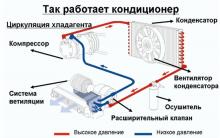
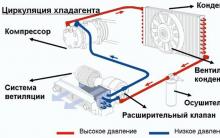
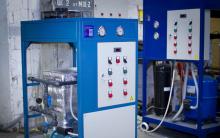
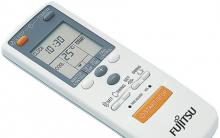
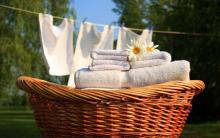
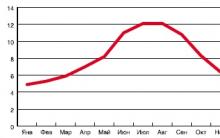




The best material for car trim
Principles of hardening the body
Do-it-yourself compressor - with minimal scrap costs
Which is better: do-it-yourself or factory-made compressor for painting a car
Causes of fuel pump malfunctions